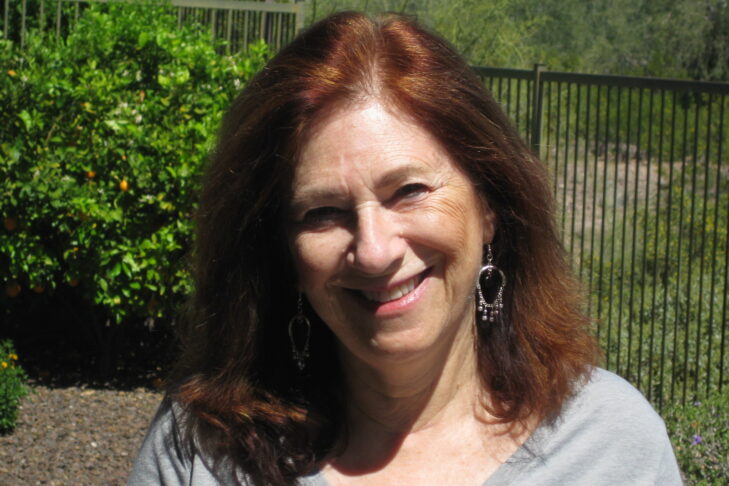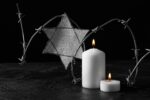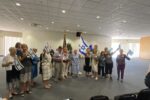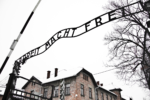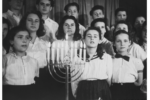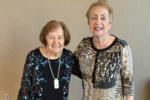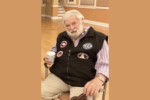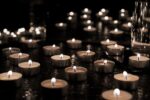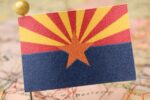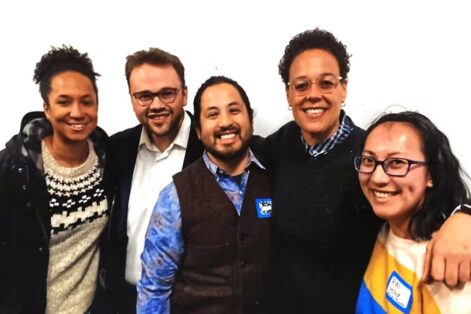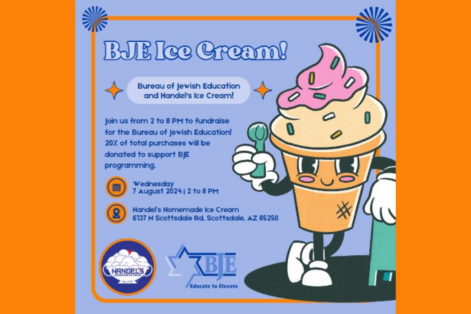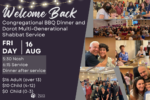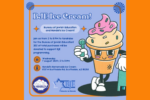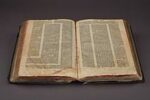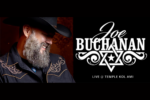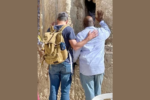“I am so glad we’re here,” my eleven-year-old daughter mused as she gazed out the car window, squinting at the rows of stately saguaro cacti lining the dusty road like prickly green soldiers standing at attention.
“But it’s too bad we won’t be able to celebrate the first night of Chanukah.”
“Why not?” came the unanimous response from the four adults in the car – my sister and brother-in-law, and my husband and me.
“Duh!” declared my six year-old niece. “We are in Tombstone, Arizona! Who celebrates Chanukah here? The cowboys?”
“We celebrate it, wherever we are,” I announced, rummaging in my purse and producing a tiny traveling menorah, barely four inches high. Everyone burst out laughing.
“Where did you find such a teeny menorah?” the girls squealed. “And what kind of candles would fit in that? Even birthday candles would be too big!”
“I got that covered,” I assured them, producing a box of extra-thin candles.
Along with my husband and daughter, I have left the cold and snow of New Jersey, where we lived, to spend the last week of December visiting my sister and her family in Arizona. As part of our joint vacation, we embarked on a two-day excursion to Tombstone and the Kartchner Caverns. Chanukah happened to fall during our trip, and I
expected it would provide a pleasant reminder of the many East Coast Chanukahs my sister’s family and mine often celebrated together, before their move to the Southwest.
The menorah returned to my purse, and the six of us spent the day exploring the town of Tombstone, which involved observing men dressed as cowboys re-enact the famous shoot-out at the O.K. Corral and then chase one another down the streets, for the
entertainment of the hordes of promenading tourists. We visited stores and restaurants that re-created the décor and ambience of saloons; we took a stagecoach ride and heard the history of the town’s founding, which is credited to a prospector who, in the late 1880’s, discovered silver ore in this area once ruled by Apaches. As the stagecoach wheels rumbled beneath us and the cowboy-actors shouted and brandished their guns on every corner, our stagecoach-driver-guide regaled us with tall tales of the numerous battles that took place when Tombstone was a lawless frontier. His main story focused on the most famous fight of all, the O.K. Corral shootout, involving
the legendary Wyatt Earp. The children’s ears perked up at the mention of that familiar name.
By the time we swaggered back to the car at day’s end, pointing imaginary guns at one another, we were thoroughly immersed in the atmosphere and mythology of the town, and could imagine the gambling houses, saloons, and brothels that once filled the streets.
That night, on the drive to our motel, we admired the glittering outlines of the giant saguaros lit up against the dark sky, as if painted on a black canvas.
“Those are Christmas lights strung around the cacti,” my brother-in-law informed us. “I don’t think you’ll see that in New Jersey.”
“Cool!” my daughter breathed, mesmerized, and I reached into my bag to feel for the little menorah.
In our motel room, as I cleared off the desk to set up the menorah, the girls rushed to close the drapes.
“We can’t let anyone see us,” they explained.
“Why not?” I asked, reopening them.
“Mom,” my daughter droned, hooking her thumbs into the belt loops of her jeans and assuming the hip-jutting stance of the cowboy, “I don’t believe there are too many Jewish people in these here parts.”
“It would be kind of…weird…if anyone else here sees us do this,” my niece added.
“We do live in a country where we have freedom of religion, don’t we?” my husband asked.
“Not like the Maccabees,” my sister pointed out. The deeds of the brave Jewish Maccabees around 165 B.C.E., who refused to give up their faith when ordered to worship pagan gods, and who took to the hills to launch a three-year guerilla-style war against their powerful Greek-Syrian rulers, are what we celebrate every year on Chanukah. Their saga of their dedication and struggle, their ultimate triumph, and their cleansing and rededication of the Jewish Temple which had been defiled and vandalized by the Greek-Syrians capture the imagination and pride of Jews everywhere.
“Yeah, our people were fighters too,” my brother-in-law pointed out, fingers laced through his belt loops. “Way before there were cowboys roaming these here parts.”
“In fact,” I took the opportunity to explain, “I did a bit of research before we came
here. You might be surprised to know that Wyatt Earp’s wife was Jewish.”
“What?!”
“It’s true. Her name was Josephine Sarah Marcus. An adventurous spirit, Sadie – as she was known – left home for the Arizona Territory as a teenager, and met Earp here in Tombstone in 1881. She was his common-law-wife for 46 years, until Wyatt’s death. In fact, both of them are buried in a Jewish cemetery, in her family’s plot in California.”
My daughter pulled the drapes open wider. “Let’s light the menorah,” she said.
The following day, the menorah ensconced in my purse once again, we headed to the newly opened Kartchner Caverns State Park near Benson.
“Hey, didn’t the Jews secretly study inside caves when they were persecuted by the Greek-Syrians?” my daughter remembered.
“And a few of them stayed outside as sentries, playing dreidl,” my sister reminded them, referring to the spinning-top game popular on Chanukah.
“Is that why we are visiting a cave now, because of the Chanukah theme?” my niece joked.
Chanukah, as it turned out, was the last thing on our minds as we stepped into the chilly, immense cavern. Conversation instantly ceased. We knew we had stepped into another world, a Nature haven, a magical kingdom of contortionist icicles. Giant stalactites dripped from above and spindly stalagmites sprouted upward from the ground.
The formations from above often merged with the ones from below, icicle arms linked in a dance. More bizarre formations could not be imagined. But what captured our imaginations most powerfully was the history of the cave. Two college friends discovered it in 1974, when they investigated a sinkhole they noticed on Kartchner property. They realized their find was an unexplored treasure, and kept it to themselves for 14 years, secretly visiting when they could. They named it Xanadu.
They feared that publicizing their discovery would lead to its abuse and ruin. When they finally went public, they devoted themselves to obtaining guarantees from the Kartchner family and the government of Arizona that the natural condition of the cave would be protected.
Outside after the tour, dazed and blinking in the harsh sunshine, we marveled at the love and perseverance of those two young men. My daughter whispered that the place felt “holy.”
“Tonight is the second night of Chanukah,” my niece dreamily remarked as we staggered through the parking lot. The connection did not need to be put into words. Inspired anew, we were ready to re-dedicate ourselves to preserving what was beautiful and special to us.
And to proudly proclaim it all, with the drapes wide open.
Story by Ruth Rotkowitz, Chicken Soup for the Soul: The Magic of Christmas.
©2022 Chicken Soup for the Soul, LLC. All rights reserved.
This post has been contributed by a third party. The opinions, facts and any media content are presented solely by the author, and JewishPhoenix assumes no responsibility for them. MORE


